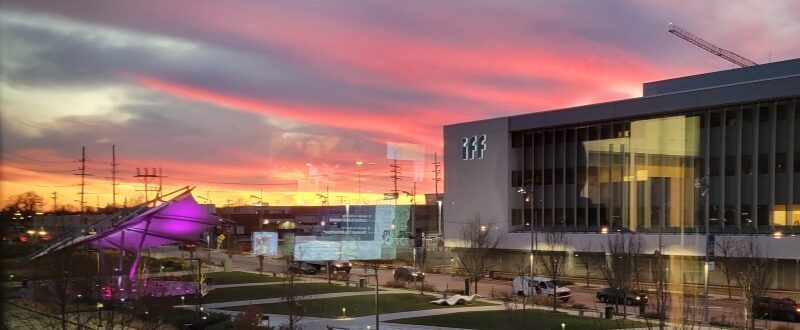
Regeneration + Living Infrastructure
It’s not simply enough to reduce our impacts and be "less bad," but to look at restoring the damage done to our natural systems. This includes technological advancements to restore soil health and water quality, as well as process water, wastewater, and storm water in low-impact approaches.
Ideal Future State
Cortex is a natural ecosystem that is healing the damage from our industrial past.
Why Important
Sustainable infrastructure not only enables sound economic development, job creation and the purchase of local goods and services, it also enhances quality of life for citizens, increases positive impacts (benefits), helps protect our vital natural resources and environment, and promotes a more effective and efficient use of financial resources.
Objectives / Targets
- Net Zero Water in all buildings by 2030.
- Target plant biodiversity (avoid non-native species) in all new landscaping.
- Using 2020 as baseline, avoid any further loss to green space or ecosystems within the District.
- Increase permeable or green space by 15% by 2030.
- Reduce urban heat island effect by requiring 75% of non-footprint areas to be pervious surfaces.
- 100% of all paving to be “cool” surfacing (SRI >50) (new and existing) by 2030.
- Minimum tree canopy of 20% for hardscaped areas of new and existing development.
- Improve air quality from pollutant emissions through planted areas.
- Water quality is protected from pollutants through bioremediation in bioswales.
- 100% of rainwater is managed in the District by roof and permeable paving by 2030.
Indicators
Envision Sustainable Infrastructure Rating System; Low Impact Development Guidelines (lowimpactdevelopment.org); Missouri Guide to Green Infrastructure (dnr.mo.gov/pubs/pub2446.pdf).
Baselines
Although there is no current baseline standard for looking at infrastructure that goes beyond traditional development, this is an opportunity to incorporate a new type of infrastructure that is both regenerative and equitable. It will be necessary to set design standards to incorporate ways the landscape and the grounds within the District can be restorative.
Future Targets
- Map and prioritize brownfield sites within the District for redevelopment by 2026
- Increase permeable or green space by 15% by 2030
- Phase out storm sewers with bioswales along street edges by 2040
Immediate Steps
Develop list of prioritized sites for cleanup within the District and set baseline.
Short-Term Steps
Identify areas and partnerships for prioritized planting areas within the District.
Long-Term Steps
Establish cool-temp sites and biodiversity guidelines for future developments.
Challenges
Infrastructure upgrades will have to be done slowly and opportunistically with development.

